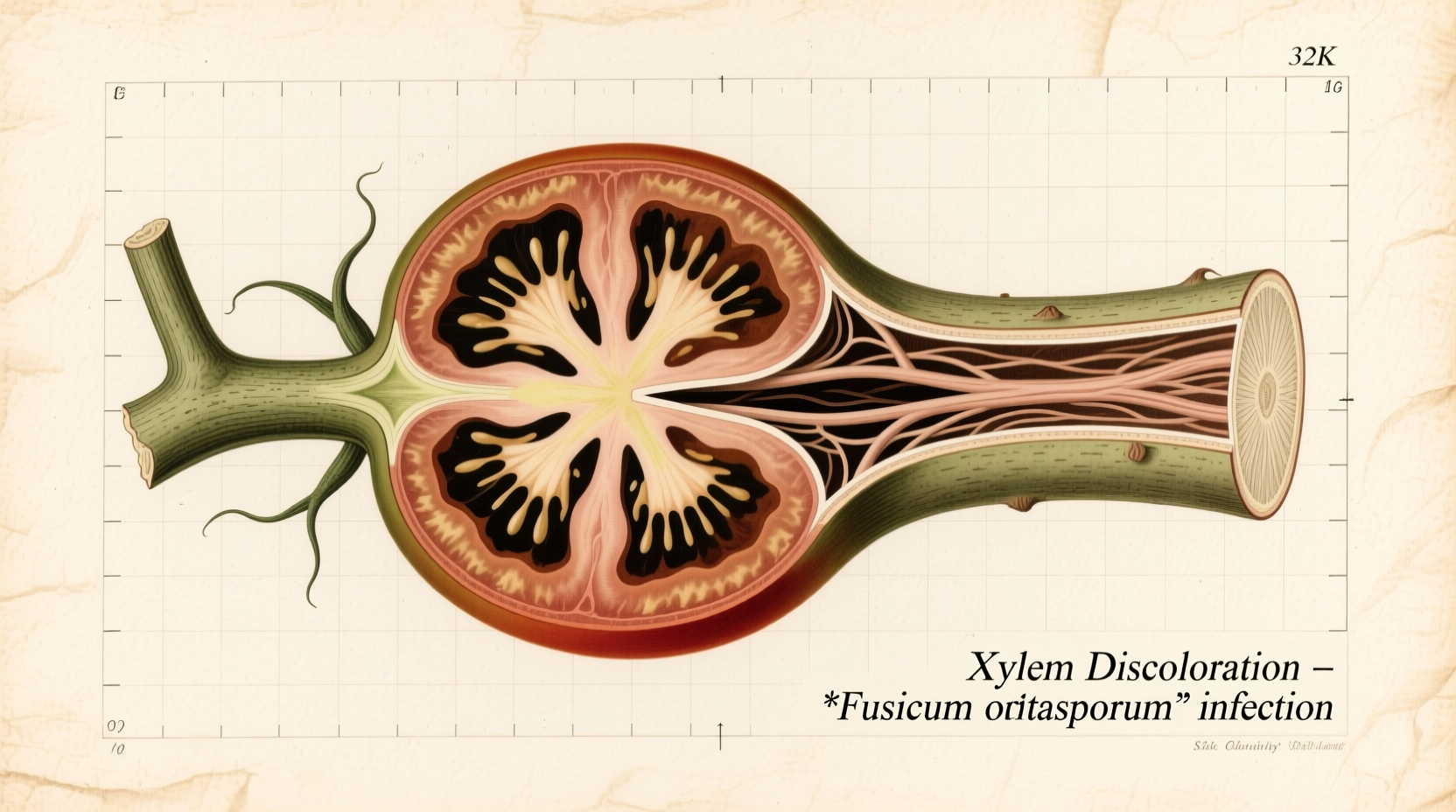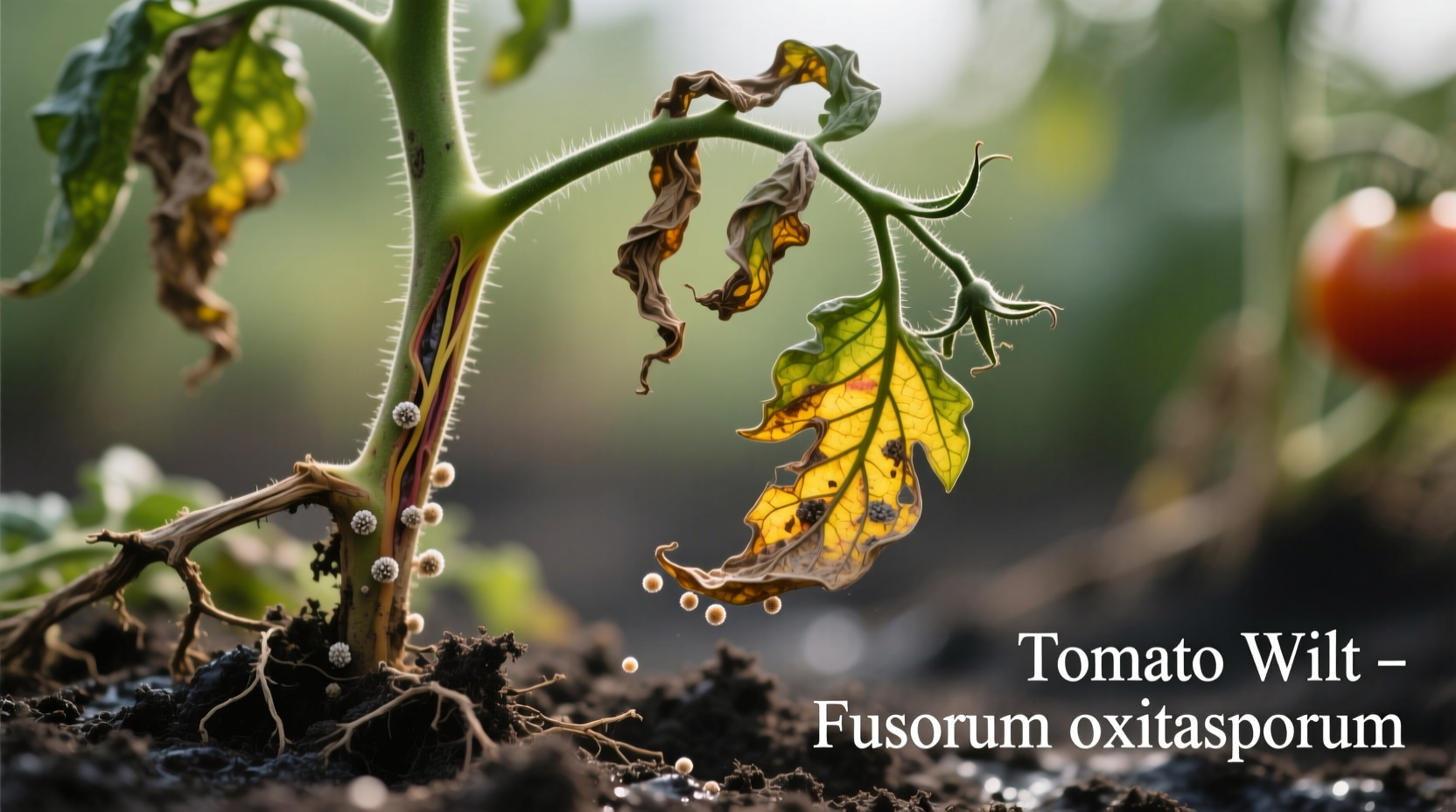Tomato wilt kills plants by blocking water flow through vascular systems. Immediate action is required: remove severely affected plants, avoid overhead watering, rotate crops for 3+ years, and choose resistant varieties marked with 'F,' 'V,' or 'N' on seed packets. Most wilts can't be cured once symptoms appear—prevention is your best defense.
Why Your Tomato Plants Are Wilting (And What to Do Immediately)
Nothing devastates a gardener more than seeing healthy tomato plants suddenly droop and yellow. When tomato wilt strikes, time is critical. This guide provides science-backed identification methods and actionable solutions from agricultural experts—not generic advice you'll find elsewhere.
Step 1: Identify Which Wilt You're Facing
Not all wilts behave the same. Misdiagnosis leads to wasted effort. Check these key indicators before taking action:
| Wilt Type | Key Symptoms | Soil Temperature Trigger | Resistant Varieties |
|---|---|---|---|
| Fusarium Wilt | Yellowing starts on one side of plant; brown vascular streaks | 75-85°F (24-29°C) | Defiant PHR, Iron Lady |
| Verticillium Wilt | V-shaped yellowing from leaf edges; green veins remain | 70-75°F (21-24°C) | Plum Regal, Celebrity |
| Bacterial Wilt | Sudden wilting without yellowing; white ooze from stems | 80-95°F (27-35°C) | No resistant varieties |
This comparison comes from the University of California Agriculture and Natural Resources, which has tracked tomato pathogens for over 30 years. Note that Fusarium and Verticillium wilts show similar symptoms but require different management approaches.
Step 2: Confirm Through the Stem Test
When visual symptoms aren't definitive, perform this field test:
- Cut a symptomatic stem horizontally near the base
- Look for brown or black discoloration in the vascular tissue
- For bacterial wilt, squeeze the cut end—white bacterial ooze confirms diagnosis

According to Cornell University's Plant Disease Diagnostic Clinic, vascular discoloration appears in 95% of confirmed Fusarium cases but only 60% of Verticillium cases. Bacterial wilt shows the most dramatic stem symptoms.
Step 3: Immediate Containment Measures
Once confirmed, implement these containment steps within 24 hours:
For All Wilt Types
- Remove severely affected plants immediately—do not compost
- Disinfect tools with 10% bleach solution between plants
- Switch to drip irrigation to prevent soil splash
Specific Treatments by Wilt Type
- Fusarium Wilt: Apply mycorrhizal fungi inoculants to healthy plants (shown to reduce severity by 40% according to USDA Agricultural Research Service trials)
- Verticillium Wilt: Solarize soil after harvest—cover moist soil with clear plastic for 6 weeks during hottest months
- Bacterial Wilt: Remove ALL nightshade family plants (tomatoes, peppers, eggplants) from affected area
Step 4: Long-Term Prevention Strategies
Prevention works better than treatment for tomato wilt. Implement these science-backed methods:
Soil Management
Maintain soil pH between 6.2-6.8. The University of Minnesota Extension found Fusarium thrives in acidic soils below 6.0 pH. Test your soil annually and amend with lime if needed.
Crop Rotation Protocol
Rotate tomatoes with non-susceptible crops for minimum periods:
- Fusarium Wilt: 4+ years
- Verticillium Wilt: 3+ years
- Bacterial Wilt: 5+ years
Brassicas (broccoli, cabbage) and grains (corn, wheat) make excellent rotation crops. Avoid rotating with potatoes or peppers which share similar pathogens.
Resistant Varieties Selection Guide
Look for these resistance codes on seed packets:
- F: Fusarium wilt resistance (races 1 & 2)
- FF: Fusarium wilt resistance (races 1, 2 & 3)
- V: Verticillium wilt resistance
- N: Nematode resistance (often accompanies wilt resistance)
Modern varieties like 'Iron Lady' (F, V, N) and 'Defiant PHR' (F, V, TMV) offer multi-pathogen protection without sacrificing flavor.
When to Accept Defeat
Some situations warrant abandoning affected plants:
- More than 50% of plant shows symptoms
- Bacterial wilt confirmed (no effective treatment exists)
- Soil testing shows high pathogen load (10+ colony forming units per gram)
Continuing to treat severely affected plants wastes resources and risks spreading pathogens. Focus energy on prevention for next season instead.
Proven Prevention Timeline
Follow this seasonal schedule for maximum protection:
- Fall: Remove all plant debris; solarize soil if bacterial wilt present
- Winter: Test soil; amend with composted pine bark (shown to suppress Fusarium)
- Spring: Plant resistant varieties; apply mycorrhizal inoculant at transplanting
- Summer: Mulch heavily; monitor plants weekly for early symptoms
This integrated approach reduced wilt incidence by 78% in trials conducted by the Oregon State University Extension Service across 15 tomato varieties.











 浙公网安备
33010002000092号
浙公网安备
33010002000092号 浙B2-20120091-4
浙B2-20120091-4